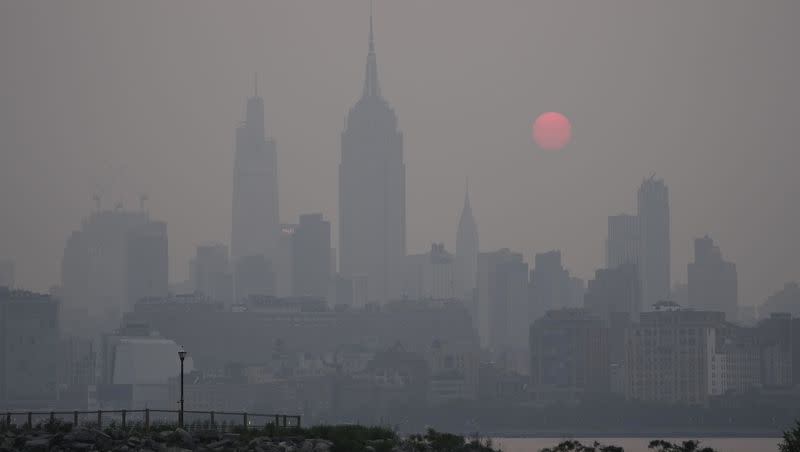American cities put under air quality alerts amid Canadian wildfires

Wildfires in Canada are bringing hazy and toxic skies to the northeastern United States, prompting air quality alerts for tens of millions of people in the Midwest, Northeast and Mid-Atlantic — 17 states total.
Tuesday evening, New York City was named the city with the worst air quality in the world compared to other major cities, The Washington Post reported.
"If you're a New Yorker with heart or breathing issues, be careful when you're outdoors. Smoke from wildfires in Canada is impacting our city's air, so an Air Quality Health Advisory has been issued. Try to limit outdoor activities today to the absolute necessities."
– @NYCMayor pic.twitter.com/e2t8XfN8XZ— City of New York (@nycgov) June 6, 2023
“If you’re a New Yorker with heart or breathing issues, be careful when you’re outdoors. Smoke from wildfires in Canada is impacting our city’s air, so an Air Quality Health Advisory has been issued. Try to limit outdoor activities today to the absolute necessities,” the New York City government tweeted on Tuesday.
Currently, 160 forest fires are active in Quebec, where some of the fires were first “ignited by lightning strikes,” according to NASA.
François Legault, a member of the Canadian parliament in Quebec, told ABC News during a news conference on Monday that firefighters are struggling “to get the wildfires under control.”
Officials report there are 400 wildfires currently raging in Canada, per ABC News.
Why is wildfire smoke dangerous to inhale?
Because “burning wildfire produces many different kinds of particles,” it’s easy to inhale harmful chemicals — health authorities are most concerned about “particles with a diameter of less than 2.5 micrometers, known as PM2.5,” Time magazine reported.
Exposure to these particles causes short-term effects like irritating the eyes, throat, nose and lungs, and can trigger asthma attacks, but the possible long-term effects include heart and lung issues that can persist, according to Time.
Older adults and young children are most susceptible to the effects that come from breathing in wildfire smoke, the American Lung Association reports.

